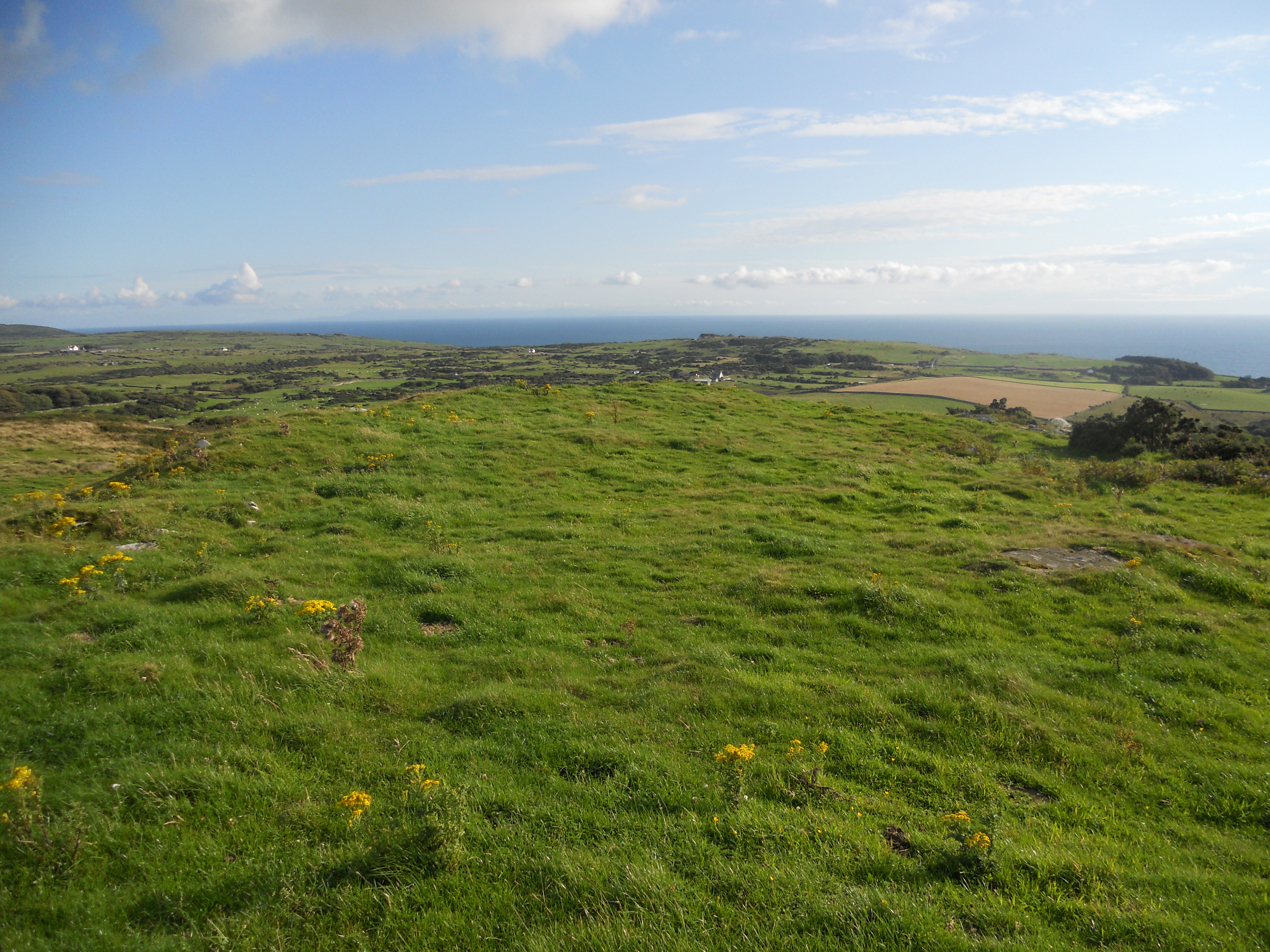
Chevaux de Frise on N Flank of Fell of Barhullion Hillfort viewed from S.

Chevaux de Frise on N Flank of Fell of Barhullion Hillfort viewed from S.

Chevaux de Frise on N Flank of Fell of Barhullion Hillfort viewed from W.

N Stone of Chevaux de Frise on N Flank of Fell of Barhullion Hillfort.

Trig Point on N Flank of Fell of Barhullion Hillfort viewed from NNE.

N Flank of Fell of Barhullion Hillfort.

E Flank of Fell of Barhullion Hillfort.

S Flank of Fell of Barhullion Hillfort.

W Flank of Fell of Barhullion Hillfort.

Remains of Outer Wall on W Flank of Fell of Barhullion Hillfort.

Entrance of Fell of Barhullion Hillfort on S Flank viewed from S.

Modern Cairn on N Flank of Fell of Barhullion Hillfort viewed from SSW.

Remains of Inner Wall on W Flank of Fell of Barhullion Hillfort.

Quarry Pit on W Flank of Fell of Barhullion Hillfort.

Enclosure of Fell of Barhullion Hillfort viewed from N.
I visited the Fell of Barhullion Hillfort while investigating the shy and retiring Cup and Ring Marked rocks on Blairbuy Farm. Most of these are covered by turf or gorse so the visible remains of the fort come as a relief.
Canmore ID 62757 (go to Links) has a good aerial picture of the fort and a detailed description of the layout. They suggest the placement of a Chevaux de Frise, an anti-cavalry device consisting of randomly placed vertically set stones, on the otherwise unprotected N flank.
Fell of Barhullion Fort
A Middle Bronze Age spearhead found on the Fell of Barhullion.
This super (and much older) carved stone ball also came from the immediate area, namely Stellock, which is the site of cup and ring marked rocks.
This area is full of prehistoric finds and sites – you’d imagine the Fell of Barhullion itself to be of significance?









































































































